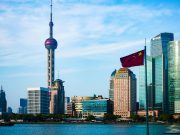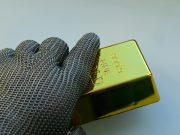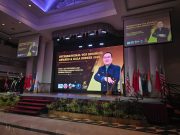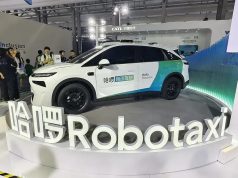
(Singapore, 19.11.2025)Tsinghua University — often regarded as China’s closest equivalent to Stanford, MIT and Carnegie Mellon combined — is rapidly solidifying its position at the forefront of global artificial intelligence (AI). A recent feature by Bloomberg highlights how the institution, already dominant in science and engineering, is now playing an outsized role in China’s drive to become an AI superpower.
The university’s sprawling 1,200-acre campus offers a glimpse into that momentum. Students cycle past Qing-era buildings and modern labs, while inside cutting-edge facilities like the Laboratory of Brain and Intelligence, researchers study the workings of human cognition and feed those insights into next-generation AI models.
This surge in activity reflects a wider national shift. Chinese AI companies — including DeepSeek, founded by Tsinghua alumni — have captured global attention with large language models capable of competing with the best in the US and Europe. Their breakthroughs have energized a new generation of researchers, reinforcing the belief that China is closing the gap with Western AI giants.
National Backing Fuels Tsinghua’s Rise
China’s leadership has repeatedly stressed the need for breakthroughs in AI and other critical technologies. This support has translated into tax incentives, funding schemes and a favorable environment for turning academic discoveries into commercial ventures. Successful young founders often receive national recognition, cementing AI as both a career path and a patriotic mission.
At the heart of this momentum is Tsinghua. Its alumni now hold influential AI roles across major technology players like Alibaba Group and ByteDance. Meanwhile, its research teams have developed key innovations — including a domestically designed AI chip aimed at competing with Nvidia, an AI-driven drug discovery system and a training protocol that allows models to learn independently of human-generated data.
Perhaps the clearest indicator of Tsinghua’s impact is its intellectual property output. Between 2005 and the end of 2024, the university filed 4,986 AI and machine-learning patents, according to LexisNexis. More than 900 of these were filed in 2024 alone — more than MIT, Stanford, Princeton and Harvard combined. Overall, China now accounts for more than half of all active patent families in AI-related fields.
Tsinghua’s rise is supported by China’s long-term strategy to cultivate STEM talent. China produced 3.57 million STEM graduates in 2020, far outpacing the US, and state media now estimates that number has grown to around five million a year.
While the country’s education system was once criticized for rote learning, top institutions like Tsinghua have shifted toward innovation and interdisciplinary training. One influential example is the computer science program created by Turing Award winner Andrew Yao, which encourages broad, inquiry-driven thinking. This environment has produced breakthroughs such as brain-inspired AI models that excel in complex reasoning tasks.

(Photo: Tsinghua website)
A Vibrant Startup Culture
Tsinghua X-lab, the university’s entrepreneurship hub, plays a crucial role in transforming ideas into companies. Since its launch in 2013, it has supported around 900 startups, many in AI and robotics. Workshops, hackathons and pitch competitions have become part of campus life, helping students move quickly from concept to prototype.
The university is also attracting back leading scholars from abroad. Returning academics — some formerly at top US institutions — have helped establish new departments focused on statistics, data science and advanced AI research. Many cite strong government backing and a renewed sense of scientific ambition as reasons for their return, according to Bloomberg.
AI is now embedded across nearly every department. A newly launched campus-wide computing platform gives students in any field subsidized access to model training, making AI experimentation part of daily academic activity. From biology to engineering, students are integrating AI tools into their research.
Closing the Gap With the US
Despite China’s fast progress, the United States still retains advantages in areas such as patent influence and the number of globally recognized AI models produced annually, according to Stanford’s AI Index. But Chinese institutions are catching up in applied AI performance and engineering-driven benchmarks.
The global talent map is shifting as well. China’s share of the world’s top 2% AI researchers climbed sharply between 2019 and 2022, while the US share declined. This suggests China is becoming increasingly attractive for elite AI talent — a trend that could reshape future innovation patterns.
Taken together, the developments point to a university entering one of the most dynamic periods in its history. With strong policy support, a massive pipeline of STEM graduates, an invigorated startup ecosystem and world-class research infrastructure, Tsinghua is positioning itself at the core of China’s broader ambitions in artificial intelligence.





































